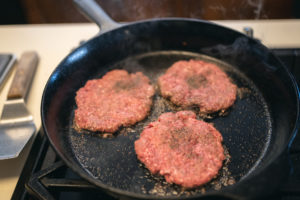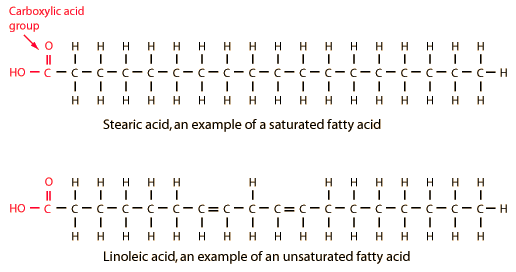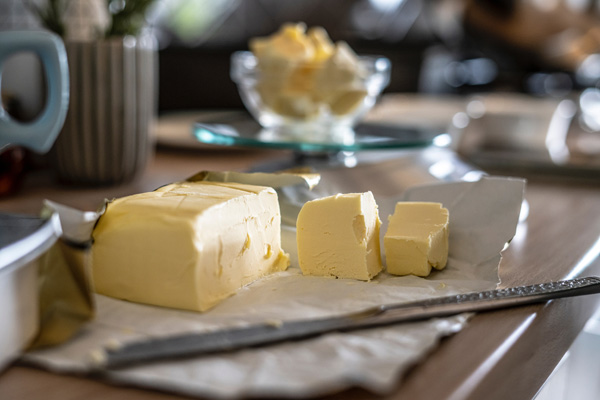ANIMAL FATS: THE COMPLETE GUIDE
In This Article
Are Animal Fats Good For You?

Afraid to eat FAT? Animal fat has been wrongfully vilified over the past 40-50 years. And sorting out the differences between “good fat” and “bad fat” is no easy task. Trans fats, now banned in the United States, used to be commonly found in vegetable shortening and margarine.
As companies learned new ways to use trans fats, which are byproducts of a process that keeps oil from going rancid, they appeared in everything from pastries to pizza until the FDA banned them in 2018 for having a poor effect on our health.
But companies that profit from the sale of sugar still have access to a surplus of plant foods like corn and soybeans. Their goal is to process, package, and market these into products they claim as healthy. And one of their best tools is to demonize animal products that contain fat.
This has been shown repeatedly in studies over the past couple of decades to be a false claim. But the damage has been done, and this FAT phobia is still deeply engrained in our thinking. The war against FAT is a strong one and it is NOT supported in science and how it can help you feel and look.Another important concept is that many of the micronutrients in our diet are classified as FAT SOLUBLE vitamins. Without fat in our diet, we cannot absorb these nutrients. So it’s important to consume fat for micronutrient balance, so our cells and hormones function well.
How Animal Fats Work in Our Body
 We break down all fats in our body into fatty acids and cholesterols. These essential nutrients become the building blocks for many hormones, cell walls and structures, and can be used for energy and energy storage in the body.
We break down all fats in our body into fatty acids and cholesterols. These essential nutrients become the building blocks for many hormones, cell walls and structures, and can be used for energy and energy storage in the body.
Do we need fats? 100% yes. Unlike carbohydrates, there are in fact Essential Fats we need to get from the diet. We cannot thrive without fat from the diet, whereas we can thrive without carbs from the diet.
THE FATTY ACID STRUCTURE
 You’ve likely heard of the terms Saturated vs Unsaturated fat. You’ve also likely heard of the term Omega 3 and Omega 6. Lastly, you’ve probably heard of polyunsaturated and monounsaturated. These are all terms that describe the type of bonding structure that fats have.
You’ve likely heard of the terms Saturated vs Unsaturated fat. You’ve also likely heard of the term Omega 3 and Omega 6. Lastly, you’ve probably heard of polyunsaturated and monounsaturated. These are all terms that describe the type of bonding structure that fats have.
For simplicity’s sake, here are some of the biochemical reasons for choosing one source over another.
- Stability – Just like we don’t want to live on an unstable foundation in our home, we don’t want our body’s cells, arteries, and structures, built with fatty acids that are unstable. Unstable fatty acids that are not well bonded can break down easily, cause inflammation, and lead to dysfunctional tissue.
- Hormone supportive – our hormones are constructed from a particular type of fat called cholesterol. We want to get a certain amount of this from our diet to have optimal hormone function.
- Digestive Irritations – some fatty acids have been shown to cause digestive irritation, inflammation, and even breakdown of the digestive lining, leading to LEAKY GUT.
I’ll get to the foods to look out for in a minute, but for now, just keep in mind that some fat sources are better than others for supporting hormone health and keeping inflammation and digestive distress away.
What About Cholesterol?
A lot of fear around eating animal fats has to do with cholesterol. So let’s break it down.
People often confuse the cholesterol in our food with the cholesterol that shows up on our blood panels. You’ll hear doctors talk about LDL as “the bad cholesterol” because high levels can lead to plaque in the arteries.
Dietary cholesterol and LDL cholesterol are not the same thing. And there are many factors that affect cholesterol in your body, such as genetics, exercise, smoking, and obesity, in addition to what you eat.

But here is why cholesterol isn’t all bad. Cholesterol is a type of fat that is found in nature, as well as one that we can manufacture in our own bodies. Our brain tissue has a large amount of cholesterol in it. And it is essential for our brain structure and function.
Where we find cholesterol in nature, we tend to find lots of other compounds that are good for our brain health too. Cholesterol is the backbone of many hormones, including our sex hormones.
We shouldn’t shy away from cholesterol completely in the diet. Focus on getting it from high quality meat and eggs and dairy.
Examples of Animal Fats
So how to choose a good source of animal fat? Focus on three key areas:
- MINIMALLY PROCESSED
- EASILY DIGESTED
- HIGHLY STABLE
Here are the best sources of animal fats that digest well and have an ideal balance of fatty acids:
- Fatty meat
- Minimally processed dairy from grass-fed sources (plain full fat yogurt, milk, butter, ghee)
- Rendered animal fats (tallow, lard, fish oil)
List of Animal Fats and Fat Content
How much fat is in steak, pork, chicken, fish, or your other favorite animal based sources? Take a look! Note that these measurements are approximate and exact amounts can vary based on specific varieties and cooking methods.
- Pork shoulder (21g/3.5oz)
- Bacon (3g/slice)
- Ground beef 70% lean (30g/3.5 oz)
- Beef short ribs (36g/3 oz)
- Chicken thigh (10g/thigh)
- NY Strip Steak (21g/6 oz)
- Ribeye (24g/6 0z)
- Pork belly (60g/4 oz)
- Lamb chops (29g/4oz)
- T-bone steak (34g/6 oz)
- Porterhouse steak (23g/6 oz)
- Babyback ribs (20g/6 oz)
- Lard (pork or leaf lard) (12g/tbsp)
- Chicken, duck, or goose fat (also called Schmaltz) – 13g/Tbsp
- Butter (12g/Tbsp)
- Ghee (15g/Tbsp)
- Tallow (beef, lamb, or bison) – 13g/Tbsp
- Full fat dairy:
- Cream (11g/tbsp)
- Whole milk yogurt (8g/cup)
- Whole milk (8g/cup)
- Cheese – goat, cheddar, colby, fontina, swiss, roquefort, muenster, blue cheese, parmesan, brie, gouda, and manchego, among others. These range from about 27-33g of fat per 100g of cheese.
- Fish oil (14g/Tbsp)
- Salmon (22g/6oz)
- Mackerel (25g/3.5oz)
Cooking With Animal Fats
Looking for more ways to get animal fats in your diet? Because these foods are satiating (and delicious) it’s easy for them to add up.
- Add heavy cream to your coffee or oatmeal
- Replace a processed late night snack with a bowl of creamy full fat yogurt
- Use ghee, duck fat, or tallow in place of oils for cooking
- After cooking bacon, store the fat in a jar at room temperature and cook with it (veggies and eggs go well with bacon fat)
- Use animal fat to season and grease cast iron
- Cook a delicious fatty cut of meat!

How Much Animal Fat Should I Eat?
Common nutritional advice is to limit saturated or animal fats to around 10% of daily caloric intake. But the relationship between heart disease and saturated fat has so many variables that a clear cause and effect conclusion isn’t possible based on these studies’ design. Here is a good roundup if you’d like to read more on this topic.
When we teach clients about nutrition, we look at how to prioritize protein and eat high quality foods that add up to a daily amount of calories that is right for their activities and goals.
What those foods are depend on the client’s preferences, lifestyle, and what they digest well.
So there isn’t one perfect amount of fat or carbohydrate for everyone. And you many not even need to worry about it in the first place. Focusing on a few big wins will get big results, and will be easier to stay consistent with too.
Should I Worry About Fat? A Quiz
Here is a CHECKPOINT questionnaire. Decide if you have the first 3 down before getting too caught up in the details of 4-6.
- Are you getting your daily protein requirement? Eat roughly your bodyweight equivalent of grams of protein per day, and split protein evenly across all your meals.
- Are you getting your daily water requirement? Aim for 50% of your body weight (in pounds) as ounces of water each and every day.
- Have you dialed in your food hygiene? Spend at least 1 meal every day where you sit down and eat without distractions, without rushing, and chewing your food each and every bite to completion (20 chews before swallowing).
- Are you including fresh fruit or veggies in at least 2 of your 3 meals a day?
- Have you started to include 1-2 servings of healthy fats at each meal of the day?
- Have you engaged in a practice of measuring or balancing your macronutrient and caloric intake to your activity level?
If you answered NO to any of those questions, then pause and tackle that habit before getting too detailed about the rest. You have to build a foundation before you start to climb to the tippy top of the nutritional pyramid, which is a point of smaller returns than what the more foundational habits will bring you.
Try our free Macro Calculator to learn more about your overall calories and see different macro recommendations based on your preferences.
More Resources

Listen to our recent Look Good Move Well podcast episode on Healthy Fat Sources on Spotify, or wherever you get your podcasts.
